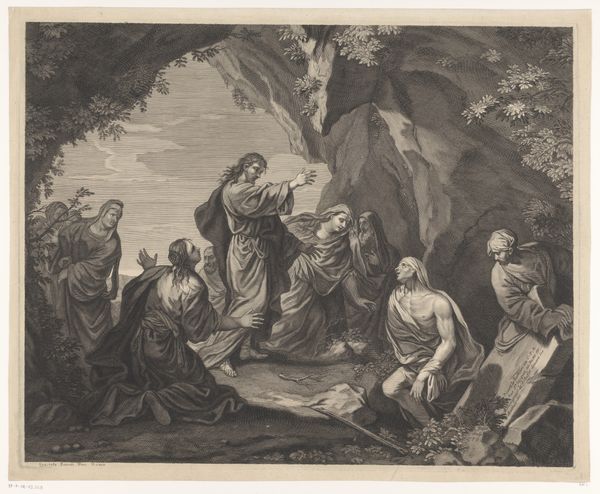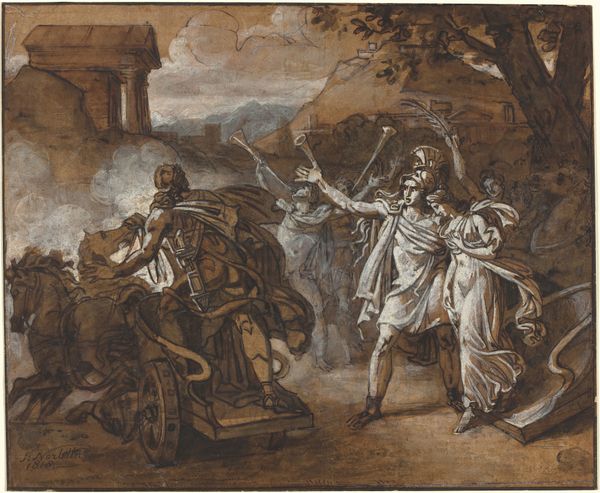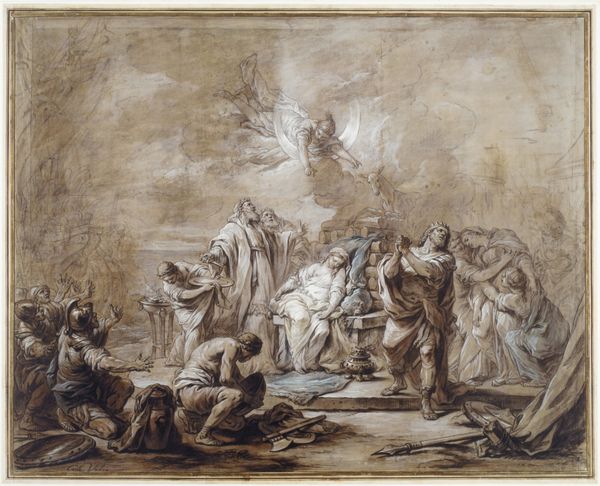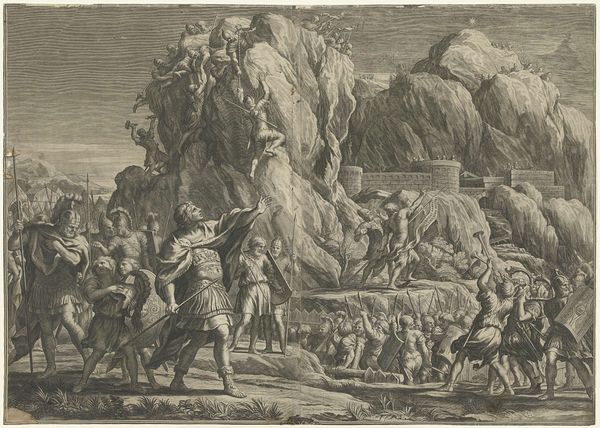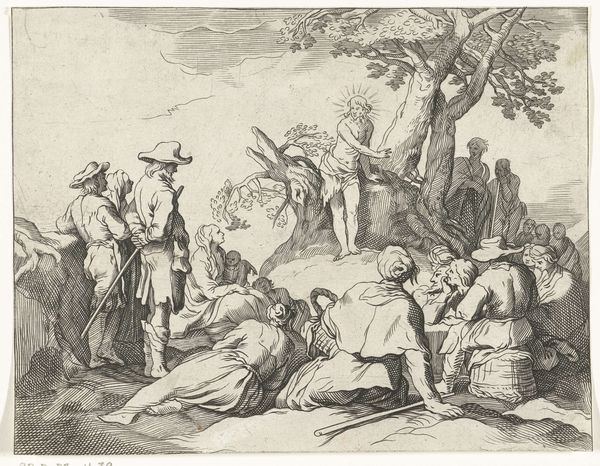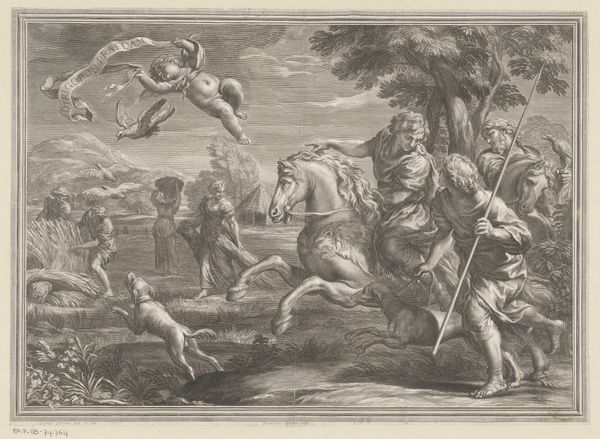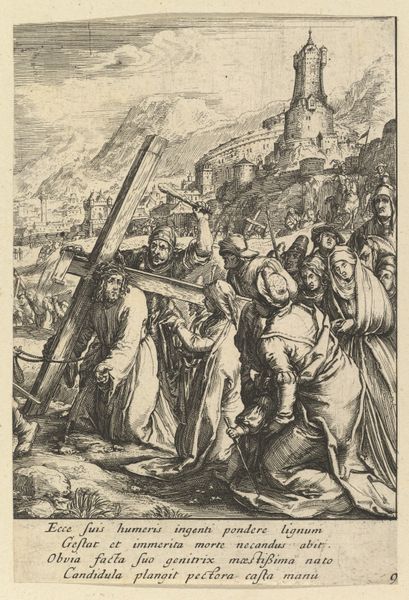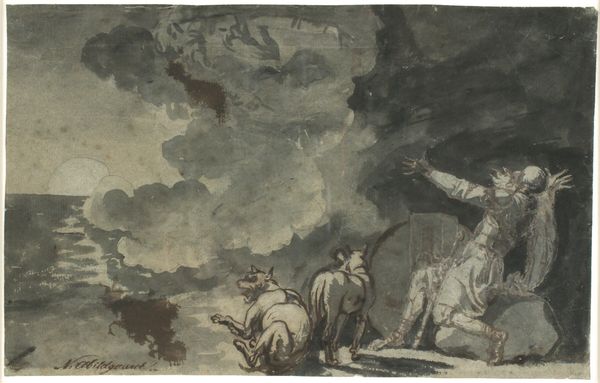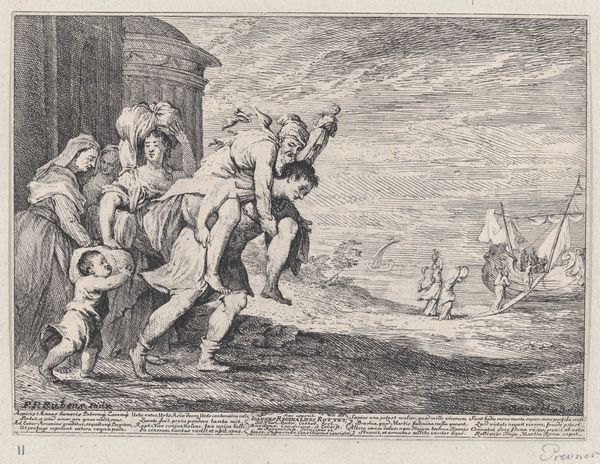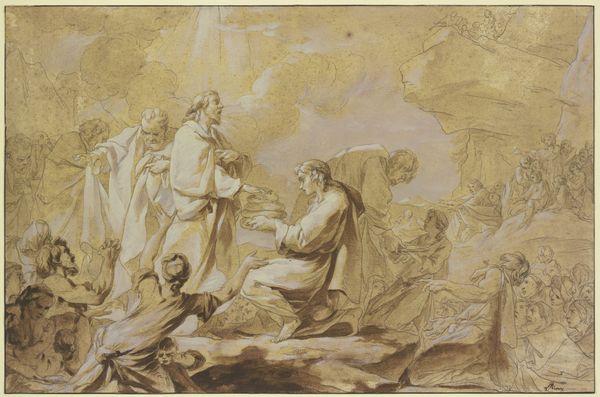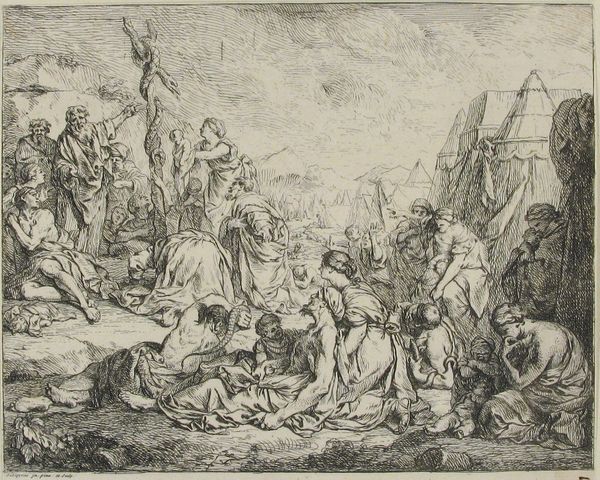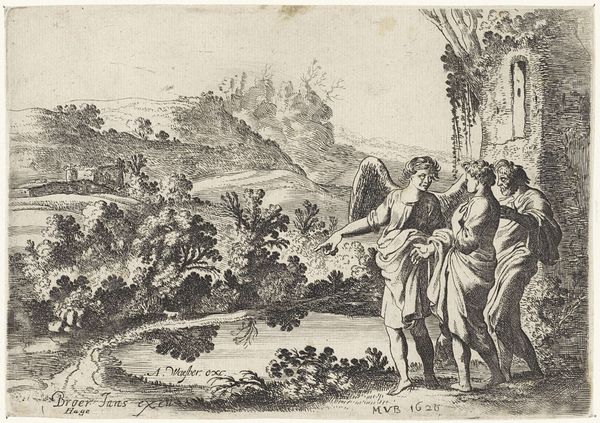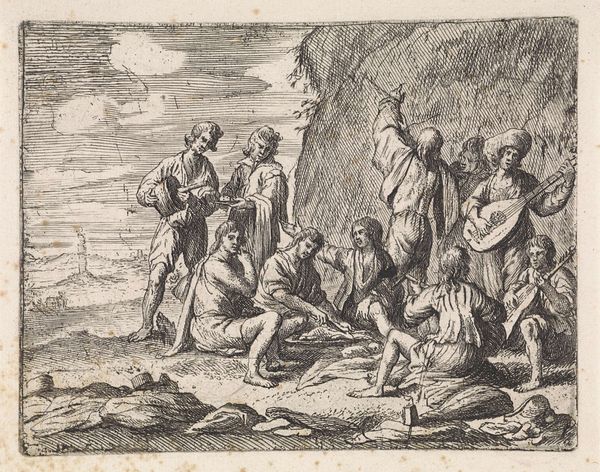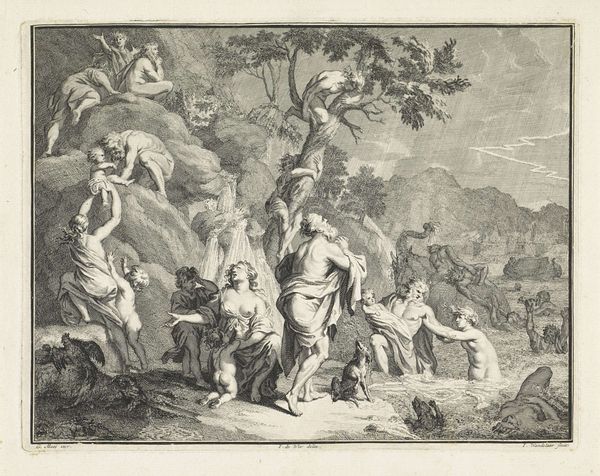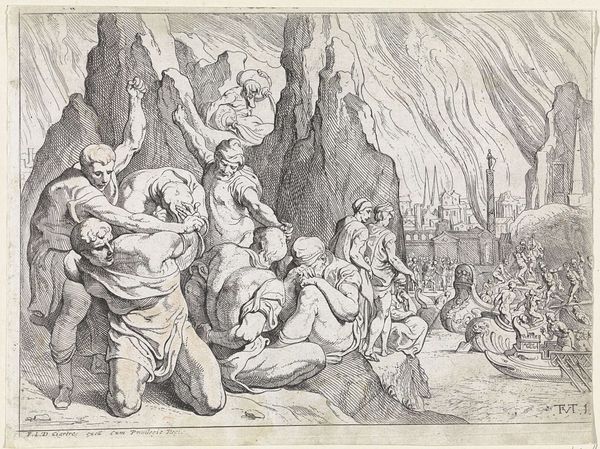
the Deaf-mute Son of King Croesus Prevents the Persians from Killing His Father
0:00
0:00
painting, oil-paint
#
narrative-art
#
baroque
#
painting
#
oil-paint
#
figuration
#
oil painting
#
mythology
#
painting painterly
#
history-painting
Copyright: Public domain
Curator: Let's spend a moment with Salvator Rosa's painting, "The Deaf-mute Son of King Croesus Prevents the Persians from Killing His Father," currently residing at the Art Gallery of South Australia. It’s a vibrant oil painting depicting a rather dramatic scene. Editor: Immediately, what strikes me is the almost chaotic composition, this whirlwind of bodies and weapons clustered around what appears to be a rocky outcropping. I can almost smell the damp earth. Curator: Exactly! There's an earthy quality to Rosa's Baroque drama, isn't there? Rosa uses oil paint in such a raw manner to heighten the dramatic effect. Look at how the figures seem almost erupting from the ground, a part of the material itself. Editor: Speaking of the figures, the act of material and human power saving another is fascinating. Here, Croesus' son, rendered voiceless but not powerless, disrupts the intended deadly process. How remarkable the narrative shows this disabled body as the vessel of saving power for his kingly father. Curator: Absolutely. Consider Rosa's handling of the figures – their garments seem to melt into the landscape, and this almost blurs distinctions between social positions of power. Is the royalty really so elevated here? Editor: And that ground! That dense, shadowy area beneath the drama makes it all almost too dark to appreciate the textures, the layers of effort in both preparation of the painting and in this scene depicted! The dirt and turmoil are heavy in that corner of the canvas. Curator: But even within that darkness, Rosa creates moments of radiant humanity. The story of Croesus’s son, mute since birth, finding his voice to save his father resonates across cultures. Editor: True, though what I keep circling back to is process – not just the artist’s brushstrokes and pigment choices, but how history is written, revised, and even, as evidenced here, intervened upon. A story not just depicted, but, perhaps more importantly, re-authored. Curator: It's like the canvas itself, initially blank, becoming a testament to intervention and re-authorization, you know? So full of gestures to prevent it from staying empty. A profound act of not just creation but defense, that both artist and artwork demonstrate. Editor: A vital reminder that making – art, history, or meaning – requires disrupting expected and existing narratives of power through collective effort. And looking at it now, knowing the setting is within a South Australian art gallery, only adds new and unforeseen material meanings.
Comments
No comments
Be the first to comment and join the conversation on the ultimate creative platform.
